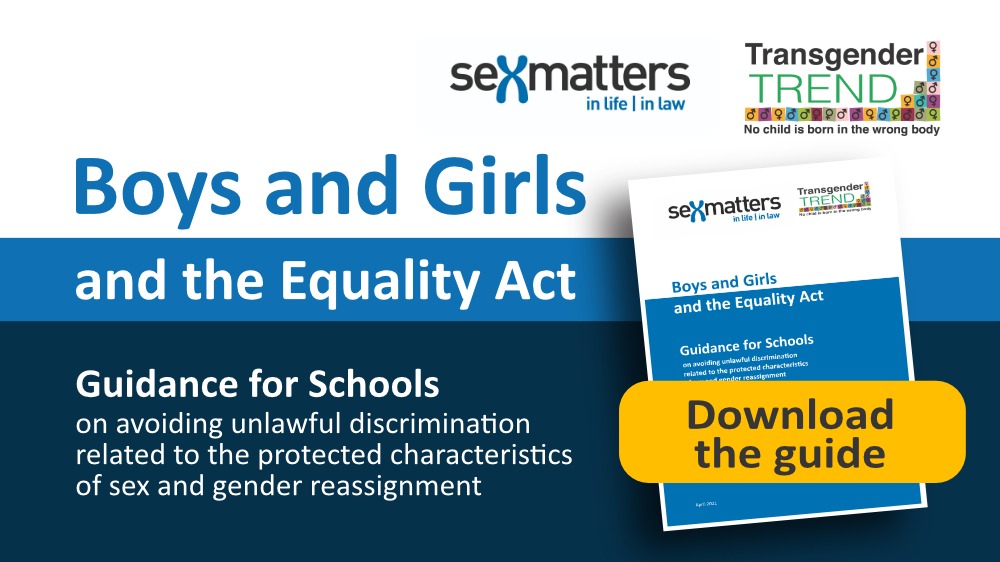Guidance for Schools
Sex Matters and Transgender Trend have developed new guidance for schools.

This guide seeks to cut through the confusion over this issue and offer simple usability. It draws on existing Equality and Human Rights Commission Technical Guidance and Department for Education guidance, school buildings regulations and safeguarding frameworks. It includes a model policy that schools can adopt.
It recognises that pupils who are experiencing gender issues, or who identify as transgender, should not be treated less favourably than their peers, but schools should remember that such children have not actually changed sex.
Overall it takes a cautious approach, aiming to ensure that children who experience gender dysphoria or who identify as transgender are not treated less favourably in education, without seeking to entrench their identification at an early age, and without removing them from normal safeguarding practice, or risking discrimination or harm to other children.
The guidance emphasises the need for schools to have clear, workable rules that take into account the needs and rights of all pupils in line with the school’s Public Sector Equality Duty obligations.
“It should be made clear to all in the school community that everyone is welcome and included – but it is not “transphobic” to recognise that everyone has a sex. This is crucial for equality, safeguarding and sex and relationship education”.
In relation to separate sex facilities the guidance emphasises that calls for “inclusion” or against “bigotry” should not be used to pressure children to accept sharing changing rooms with members of the opposite sex. It should be remembered that each cohort of girls will include girls with religious beliefs, girls who have been victims of sexual abuse and girls who are simply uncomfortable changing or showering with male pupils – and that as children get older it will become less and less appropriate to share such spaces. Decisions cannot be made on a case-by-case basis to allow some pupils into opposite sex facilities.
Schools may be able to offer unisex or flexible facilities. Existing EHRC technical guidance states that “ A suitable alternative might be to allow the pupil to use private changing facilities, such as the staff changing room or another suitable space”
This resource has been developed for schools, local authorities and their advisors. It is a consultation draft and feedback is invited – please use the feedback form to give structured feedback
